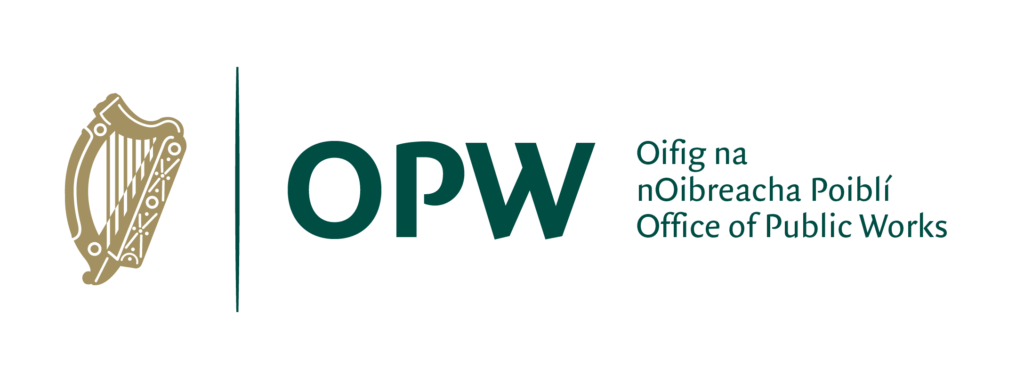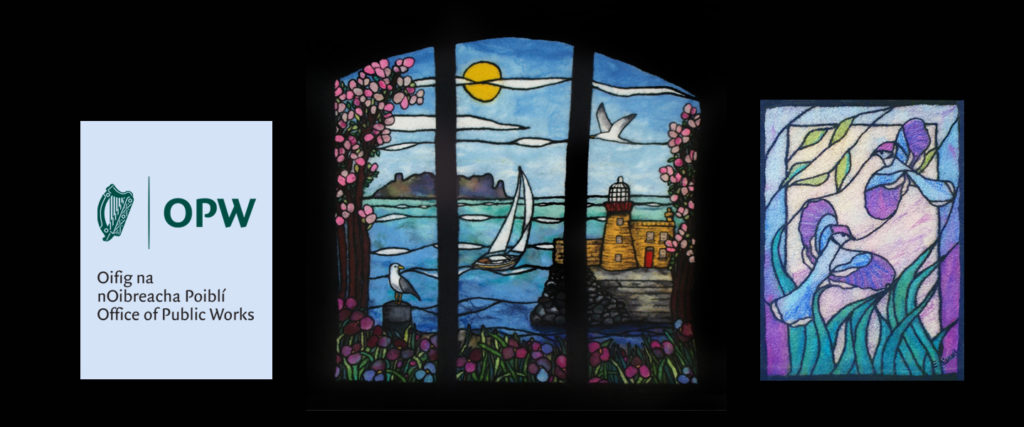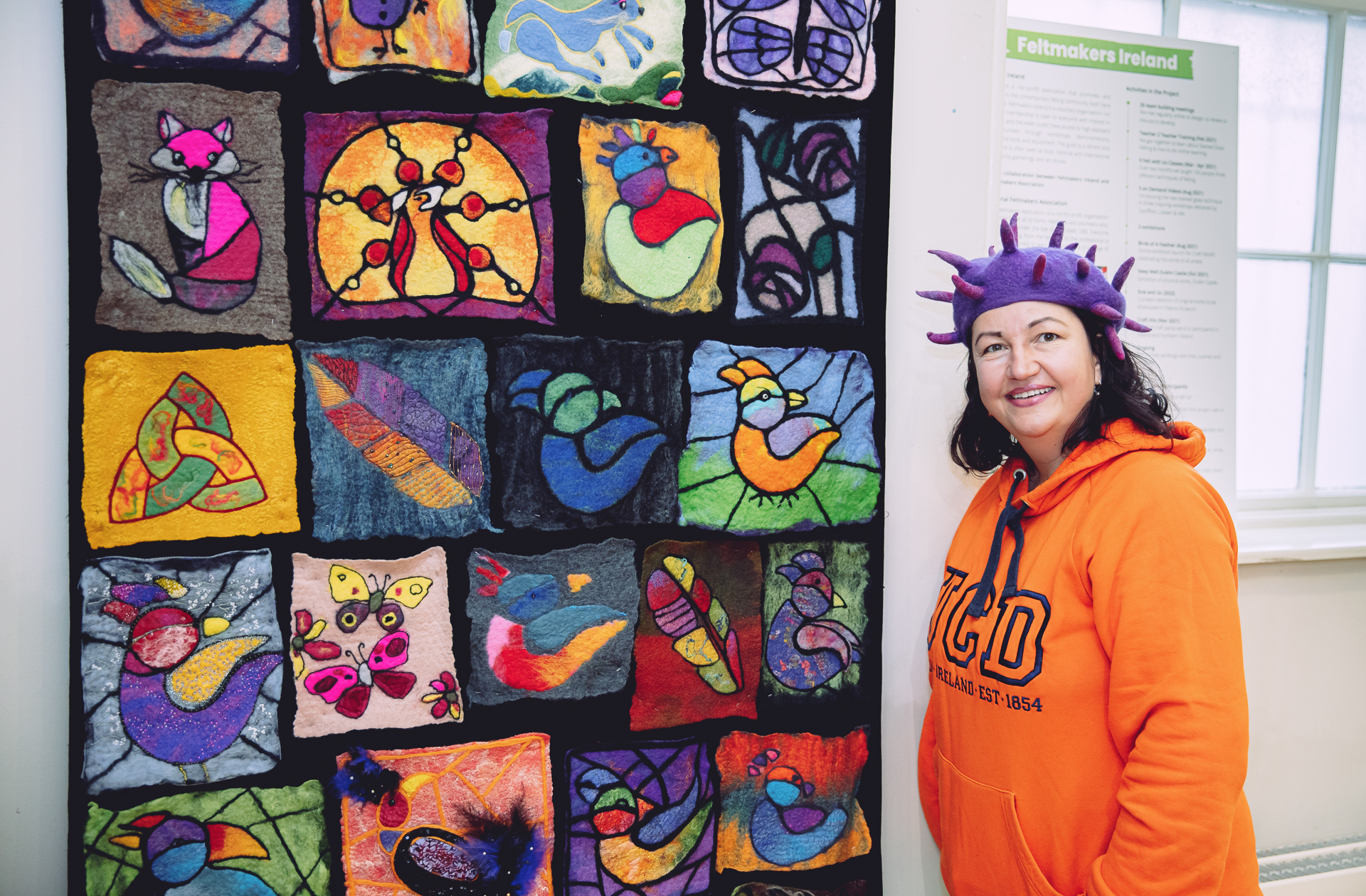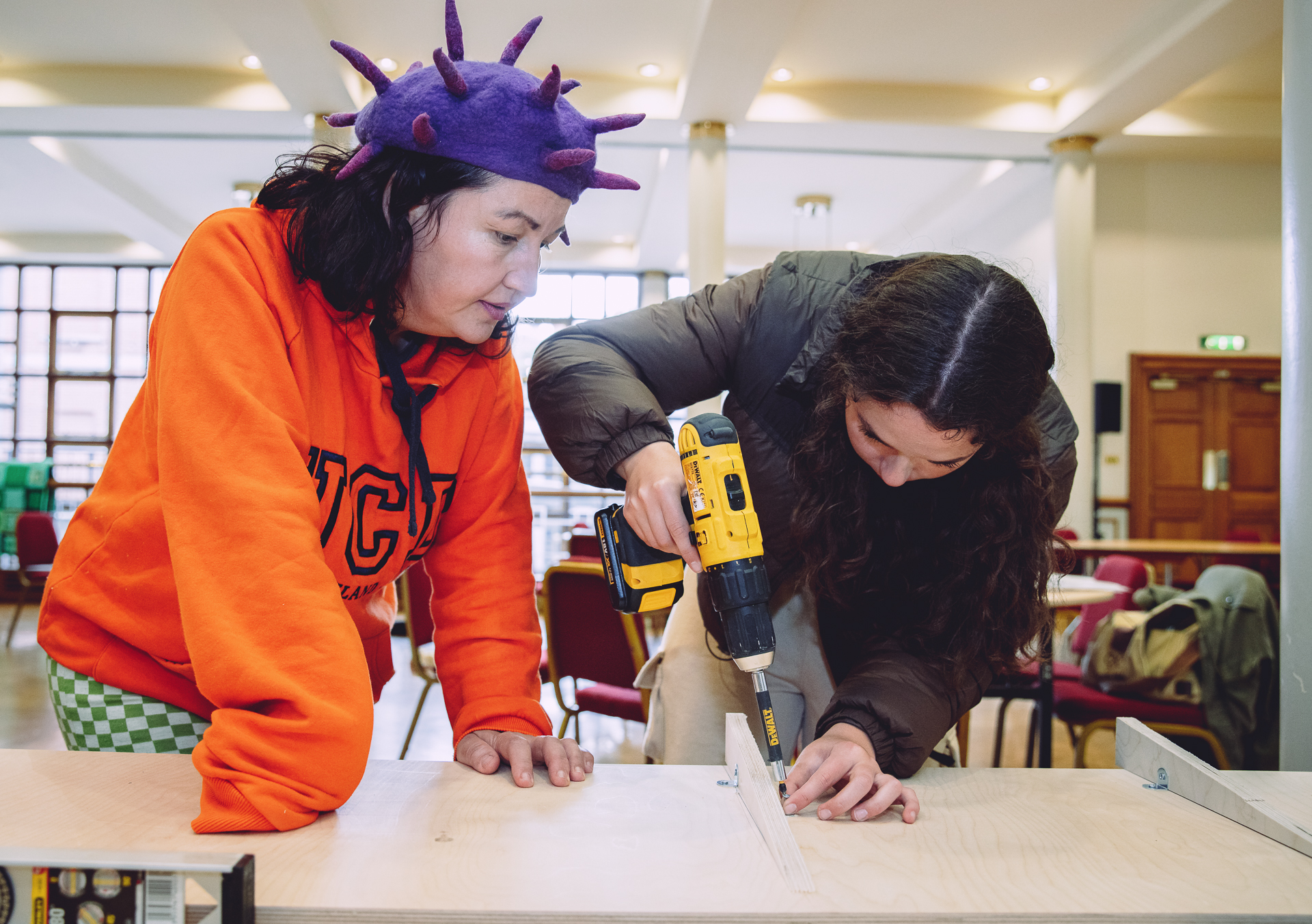An international exhibition of felt stained glass held at the Pearse Museum that runs from the 14th April until the 24th June. It includes the work of over 30 artists from Ireland, UK, France, Germany, Japan and the US. Some of the most influential artists across the globe are part of it. The call out prompted artists to interpret stated glass technique in felt. The curator is Dr. Niki Collier who developed her own technique of felt stained glass during lockdown.
This event is possible with the generous support of the OPW. Pearse Museum and St Enda’s Park are operated and managed by the Office of Public Works.

About The Pearse Museum
Surrounded by fifty acres of landscaped parkland, the museum is located in the former home and school of Patrick Pearse, the leader of the 1916 Rising. He founded his school, Scoil Éanna, in 1908 in Cullenswood House, Ranelagh. His initial interest in education stemmed from his involvement in the Gaelic League and the Irish language movement. However, he very quickly became passionate about education and its possibilities. His ideas were progressive and radical, and he had little time for the exam-focused education system of the time. He felt that schools should nurture the talents of all their pupils, even if those talents lay outside the traditional school subjects.
For Pearse the key to real learning was inspiration, and he felt that to be a success his school needed a suitably inspiring setting. He was anxious to find a home for his school which would allow his pupils direct access to the natural world. He discovered The Hermitage in Rathfarnham in 1910 while on a historical pilgrimage of sites associated with the revolutionary Robert Emmet. Nestled in the foothills of the Dublin Mountains, it was the ideal location for his school.
Innovation in technique, teaching, and community work
The What and how of Felt Stained Glass
Motivation for the technique – The felt stained glass technique is founded in the contrasting forces in nature: from chaos to structure and from destruction to mending. The world was becoming broken and chaos was shadowing all aspects of our lives. As humanity we are not new to this experience, but as a generation, we needed re-assurance that it will pass and that all aspects of healing are meaningful.
How to make felt stained glass- a fabric handmade from wool fibers. The handmade felt pieces are cut into shapes in a puzzle-like manner and are put together to represent something new. The borders where the puzzle pieces come together are embellished with needle felting or embroidery. The process of putting together the broken/cut structure in a puzzle like fitting transcends to art imitating attempt to make sense of the puzzle which the unknown brings. The finished work elevates the piece both as in terms of colour and as a texture experience that pushes the boundaries of the medium to a new understanding. Allowing both complexity of expression, but also enriching the learning experience through felting.
The teaching method –Classes that took place through 2020 and 2021 were delivered online in live Zoom classes. 2021 saw the addition of on-demand video tutorials for those cases when attending a live class was not possible. Transitioning to teach online was easy for Niki, as her MA was in E-learning. Sometimes the perfect storm, or in this case a pandemic, is the only place where all your resilient bits come together. The technique has been shown to be Internet proof and all classes in the first year were done online using Multiview during the classes. Teaching online has the benefit that it enabled us to scale the reach of the project. In a conventional classroom it would be challenging to work with students with mixed abilities and mixed experience. While felting online, it is much simpler to inspire interest and boost confidence, through the combination of live zoom classes and the video tutorials which could be watched on demand.
The Felt stained Glass Community
The technique saw evolution in the three years that it has been used. Many beginners discovered felt making through it. It also ignited the creative juices of artists from around the globe and some of the most interesting fiber artist have contributed to this exhibition.
Timeline of the technique reach growth
2020 – The technique was born from the inspiration of Evie Hone, a stained glass artist who worked in the studios in Marlay Park where Dr. Niki Collier is based. It started as a modest attempt to bring felt friends together through the running of a series of three classes with 10 of my students online during the first lockdown.
The finished art pieces were exhibited in the studio space of The Constant Knitter in the autumn. We also had a Zoom opening where we shared a glass of champaign virtually.
2021 – At the beginning of the year Health Ireland, in collaboration with DCCI, put forward a proposal for engagements through artists and organisations to work together. Feltmakers Ireland commissioned me to make a project proposal and run classes teaching people the technique. The teaching was done in collaboration with 2 other tutors Liadain Butler and Caóilfíonn Murphy O’Hanlon. The Feltmakers North and Region 14 coordinators, Jane Fox and Helene Dooley helped to put together a project which avalanched to over 250 subscriptions for online classes. It became a token of the time- while Brexit was breaking people’s hearts we came together as one – one land one art – just love for wool and creativity.
We managed to send 150 kits and give classes to 150 people in the new technique.
The success was supported greatly by Rosemary Steen, the CEO of DCCI. She stood behind the idea to put an exhibition together with all the 9 GANS who had community projects. Operation Keep Well just kept on giving back joy to people and celebrating their creativity and their community spirit. The exhibition Keep Well opened at Dublin Castle during the first in person DCCI event- World Crafts Council Conference and GANS meeting in October. It was visited by President Higgins.
2022 – The Pearse Museum awarded an exhibition slot to the proposal of running a two-fold exhibition for Easter 2022. Together with the museum we put an innovative program which included curators talk, workshops (both online and in person) as well as an artist talk and an international class. The online classes were run by Helene Dooley, Liadain Butler and Dr. Niki Collier. There was access to the online tutorials as well the DCCI videos on demand. The exhibition will be officially opened on the 23rd April by Liz Nilsson, one of the 50 Irish Heros and runs till the 26th June. There are over 30 Irish Artists and 30 international artists participating in the exhibition. There is also a community panel of over 70 works.
The Artists
Exhibiting Artists include:
- Mandy Nash: the Chair of International Feltmakers Association.
- Deirdre Gallagher: the Chair of Feltmakers North.
- Ellen Silberlicht: the Chair of Feltmakers North US.
- Maria Friese: one of the most influential felt artist as described by the New York Times.
Exhibition would be opened by
- Liz Nilsson: One of the DCCI, Irish Craft Heroes
The community aspect pieces
The piece contains more than 70 pieces and is growing all the time through online and in person workshops or just through people who have just been curious to have a go at trying something new following the video tutorials. It was originally launched online during August Craft Month.
A selection of pieces was shown in Dublin Castle During October as part of DCCI GANS Community Exhibition. Now the ever-growing piece contains 30 more pieces created by people inspired by the event.
The Curator
Niki Collier, PhD is a Dublin-based award-winning visual artist & designer working in fibre art and performance. Her work uses scale to spark empathy & empowerment. She disrupts science, art and performance to elevate people to a protagonist through her art engagements. Her practice blends contrasting strands. Warped as an academic makes her relentlessly curious. Grown as disabled person & a woman makes her talk about resilience. Her practice is nurtured by meaningful connections with people with various abilities and from diverse backgrounds. All is done by storytelling and wool.
This is Dr. Niki Colliers second commission to curate an exhibition. The first was DCCI GANS exhibition in Dublin Castle in 2021. This is first collaboration between Brian Crowley and Dr. Niki Collier.




Pingback: Textile Journey 2022 Group Show – Textile Journey